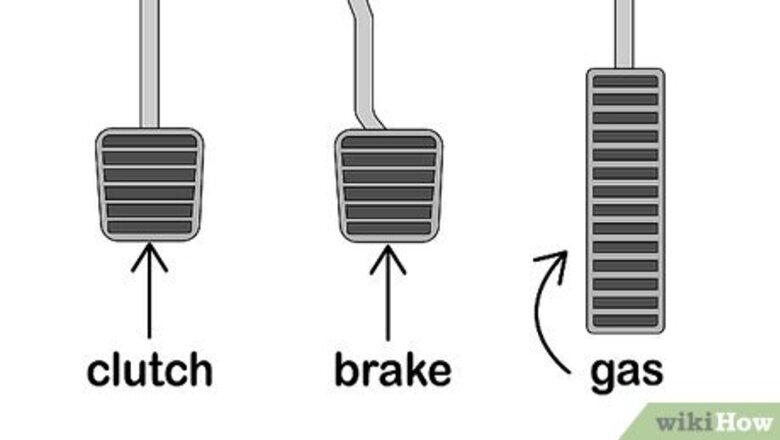
views
Starting From a Full Stop in a Manual Vehicle

Find the clutch pedal. The clutch pedal should be the left pedal in your vehicle, next to the brake in the middle. You'll have to press down on the clutch as you change gear, so it's important to know where it's located before you start driving.
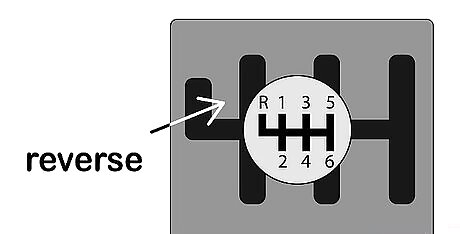
Examine the pattern on the top of your gearstick. Familiarizing yourself with the pattern on top of your gearstick will help you understand where the gearstick needs to go when changing up a gear. The gearstick should have R, 1, 2, 3, 4, and sometimes 5 or 6 gears. R means reverse while the rest of the figures stand for the gear that your car is in. When upshifting, you'll be moving from one gear to the next highest gear to gain speed in your vehicle. Different cars will have a different shifting patterns. It's important to understand your car's pattern before you start driving.

Start the vehicle. Put your key into the car's ignition and rotate your wrist to start it. If you have a button ignition, press the button instead. Push the clutch down once you've done this, and keeping the handbrake engaged will ensure that the car doesn't roll as you change gears.
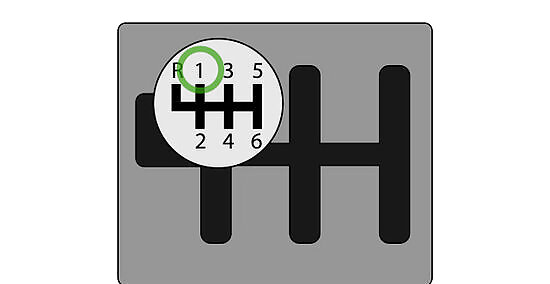
Move the gearstick into first gear. Move the gearstick into first gear and release the handbrake. As you do this the car should start to roll. If you start the car on an incline you'll have to keep your foot on the brake to prevent it from rolling backwards.
Lift off the clutch and slowly press on the accelerator. Slowly lift off the clutch while simultaneously pressing down on the accelerator. As you do this you'll start to gain momentum in first gear. This is the hardest part of getting started, so don't worry if you stall the engine. If you stall the engine, turn off the car and start over from the first step.
Upshifting in a Manual Vehicle

Start upshifting when your car reaches 2,500 - 3,000 RPM. RPM stands for revolutions per minute and refers to the speed of the engine. The tachometer, or the meter that reads your car's RPM, is usually found next to your speedometer and has numbers from 0 to 9. Once the needle on this meter is between 2,500 to 3,000, you should begin to upshift.
Press down on the clutch while lifting off on the gas. Use your foot to depress the clutch pedal while at the same time slowly lifting off the gas. This will free up your stick shift and allow you to slide it into the next gear. During this time your car will go into a neutral state, and you'll notice your engine revving if your foot is pressed too hard on the gas.
Use your hand to shift up into the next gear. Shift into the next highest gear as you're pushing the clutch down to the floor. If you're in first gear, you will move the stick shift into second gear. This should happen in one fluid motion, so don't hesitate for too long. Practice shifting while your vehicle is off so that you get used to the pattern of the gears.
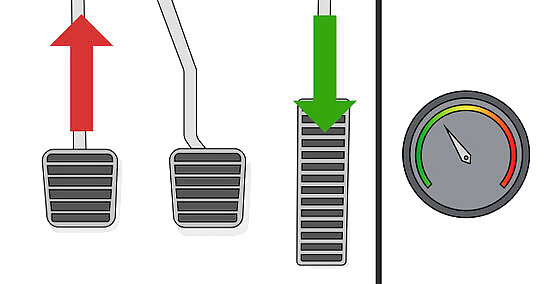
Lift off the clutch and press on the gas. Once you've moved up into the next gear, you can start to slowly lift off the clutch while giving your car more gas. If done correctly, the car should start to accelerate again and the RPM should go back down. Your car won't stall when shifting higher than first gear because it's already moving.
Starting From a Full Stop in a Motorcycle
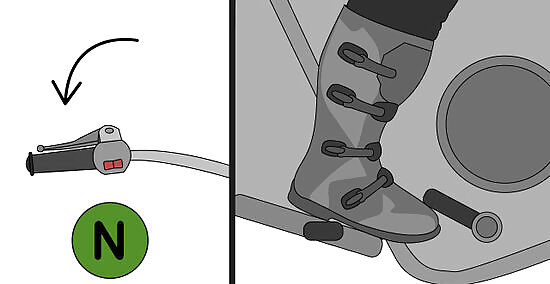
Put the bike in neutral. Put your motorcycle in neutral by squeezing the clutch lever, or the lever on the left-hand side of your handlebars. With the clutch squeezed, press down on the shift lever, or the lever at your left foot. This will put the bike in first gear. Neutral gear is one half-click up from first gear. Once the shift lever is all the way down, lightly lift up on the shift lever with your foot until you hear a click. This will put the bike in neutral. Some motorcycles will have an indicator light that lets you know when it's in neutral.
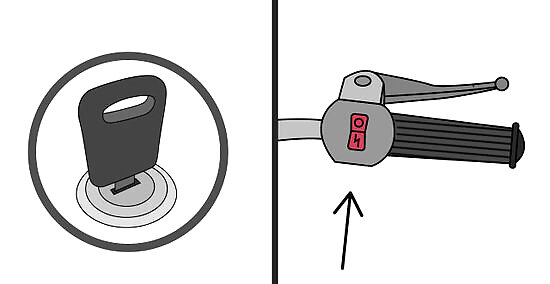
Start the engine. Press the ignition button your bike to start it. You don't need to press down on the clutch or touch anything else as you start your bike's engine.

Squeeze the clutch and push the shift lever down to first gear. Compressing the clutch lever allows you to switch gears. Squeeze the lever as you push your gear shifter down, into first gear.
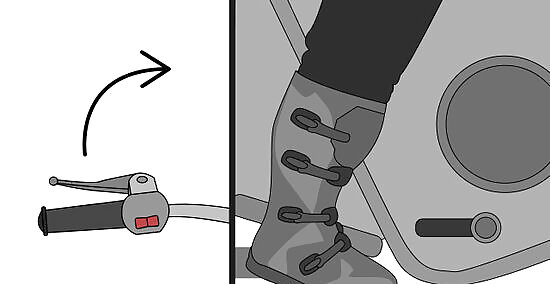
Slowly release the clutch and walk with the bike. As you release the clutch the bike will begin to roll forward. Start walking with the bike as you slowly release the clutch to get a feeling for the bike as it's moving. If you stall out, turn off the bike and start over from the beginning.
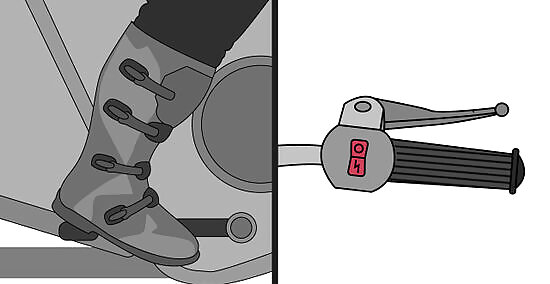
Find your balance on the bike. Once you get moving, lift your feet on the foot rests of the bike. Position your left foot so that your toe is under the shift lever so that you can upshift while accelerating.
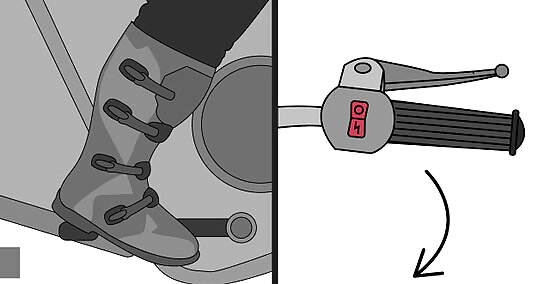
Rotate your right wrist backward on the throttle. Rotating your wrist backward on the right handlebar will give the bike throttle and propel it forward. Once you let off the clutch without the bike stalling, you can practice giving the bike throttle to accelerate in first gear. Do not give the bike too much throttle or you will send your bike flying forward.
Upshifting on a Motorcycle
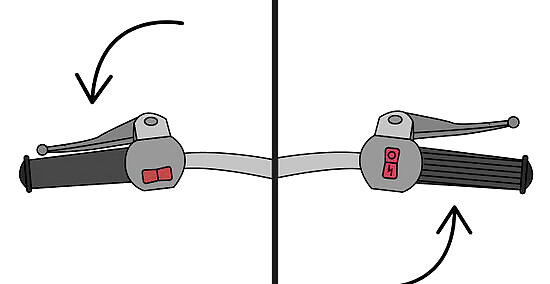
Squeeze the clutch lever while reducing your throttle. Squeeze the left clutch lever while slowly releasing your hand on the throttle. This will allow the bike to shift up into higher gears.
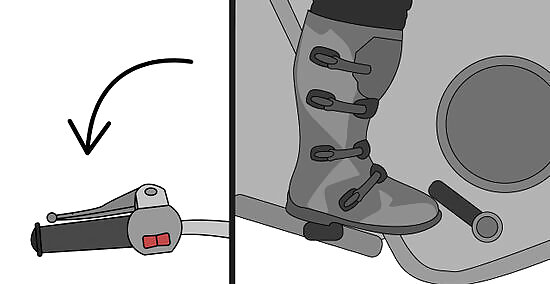
Push up on the shift lever to put it into the next gear. With the clutch still depressed, push up with your left toe on the shift lever. This will put the bike into the next highest gear.
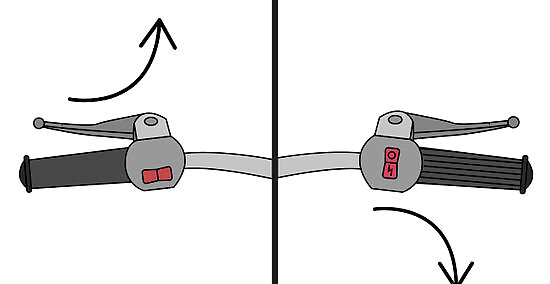
Release the clutch while feathering the throttle. Gradually release the clutch while rotating your wrist backward on the throttle. Again, you shouldn't give the bike too much throttle, or you may lose control of it. If you did everything correctly, you will have upshifted into the next highest gear.














Comments
0 comment